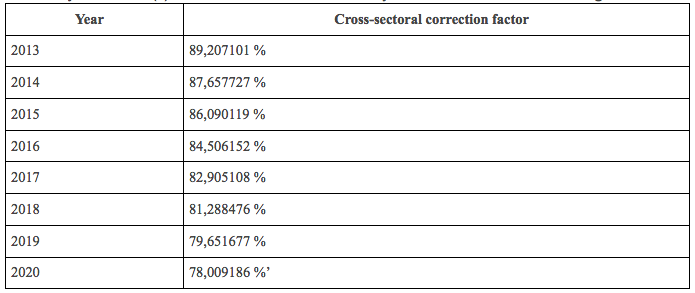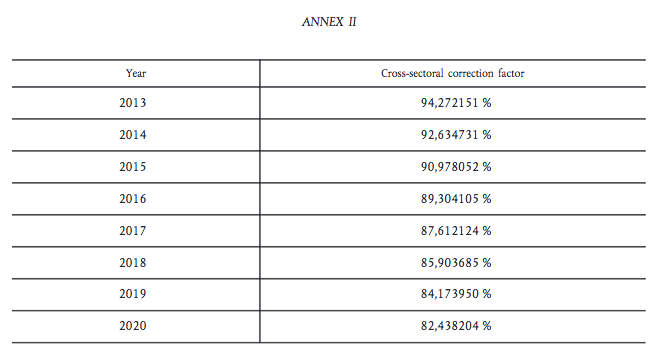|
UPDATED: 07/02/17 DISCLAIMER: The below represents the author's interpretation of the implications of the new CSCF, and should not be taken for the official position of the Commission. Following a ruling from the European Court of Justice (ECJ), the European Commission has revised the Cross-Sectoral Correction Factor (CSCF) values for ETS Phase III (2013-20). The new values will only be applied from March 2017 when agreeing free allocation adjustments for sites that have undergone a significant capacity reduction. When applied they will reduce free allocation to an installation by an additional 4-5 percentage points compared to the old CSCF values. If installations require no adjustment to their free allocation (because they have not experienced a significant capacity or activity level change) their allocation up to 2020 will remain as defined in existing National Implementation Measures. If installations require an adjustment in free allocation due to a capacity extension or change in activity level they will also be unaffected by the new values. With capacity extensions, the additional allowances come from the New Entrants’ Reserve (NER) rather than the general pool of free allowances, and the NER is not subject to the CSCF. And with activity level changes, Article 23 of the Benchmarking Decision is clear that an adjustment is made without a recalculation that would involve the re-application of the CSCF. I understand that the Commission is updating its Guidance Note on free allocation adjustments to make clear that activity level changes are not affected. The note currently proposes a methodology for recalculating allocation in the instance of an activity level change that uses the CSCF, but this does not have the same legal standing as the Benchmarking Decision. In 2013, 32 installations out of 11,000 had adjustments made to their allocation as a result of a capacity reduction. Assuming a similar proportion (~0.3%) require adjustments each year from 2017, we may see 1-1.5% of installations end up on the stricter CSCF by the end of Phase III. The Commission’s interpretation of the ECJ ruling is more generous to industry than analysts had predicted, only applying the higher CSCF values from 2017 (rather than retrospectively) and then only when modifications are made due to capacity reductions. The new values: The old values: Notes:
Links: ECJ Ruling CSCF Decision FAQ Benchmarking Decision Free Allocation Guidance—To Be Updated 2017 NER Status Report 2014 Activity and Capacity Changes Report Contact: [email protected]
2 Comments
|
Damien GreenManaging Director Archives
February 2023
Categories |

